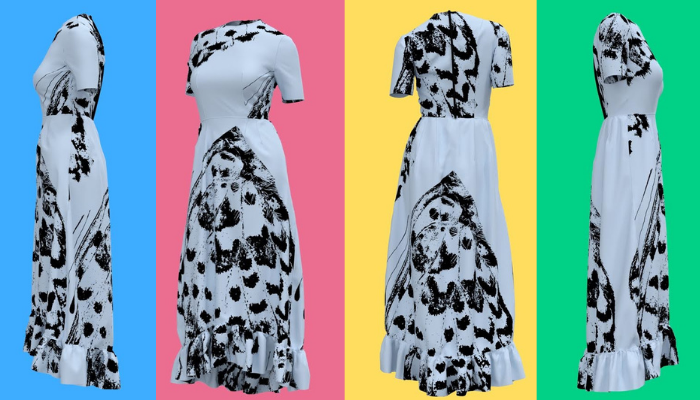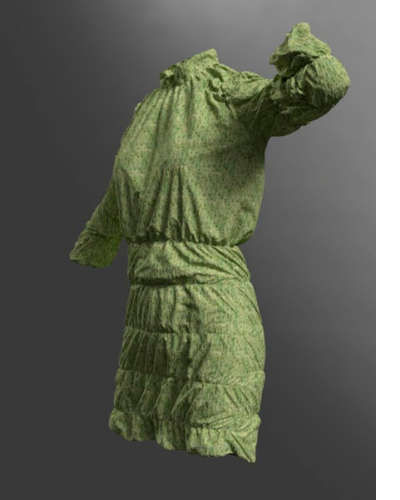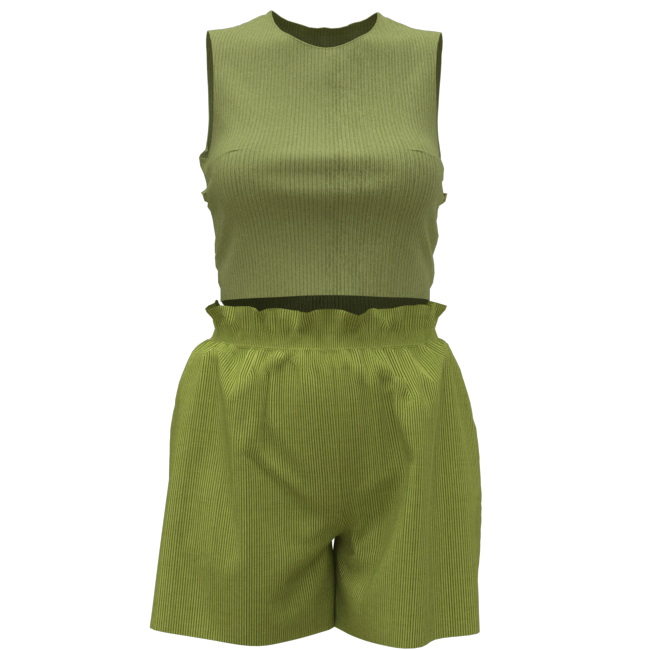What Are the Benefits of 3D Rendering in the Fashion Industry?
Discover how 3D rendering revolutionizes fashion design with realistic prototypes, reduced waste, and innovative tools like Browzwear's VStitcher.

It’s always interesting to discover the different experiences people have with 3D and how their digital journeys have evolved and impacted their careers. The past few months have certainly been rocky for the fashion world, however, it’s inspiring to see the talented individuals who have used these uncertain times as a way to bring about new innovative ideas to keep the industry moving forward. We caught up with Ditte Bjerring , fashion buyer and Browzwear Guild member to hear about her recent entry into the world of 3D and how it has sent her on a new and exciting path.
 Although initially educated as a buyer after studying Purchasing and Management at VIA Design in Denmark, throughout both her studies and employment experience, Ditte delved into a variety of different fashion and business-related fields, from sales and merchandising to quality control and sustainability. Whilst working in different retail stores including childrenswear and sustainable menswear, her interest in textile design was sparked as she began to seek a more hands-on and creative role. Ditte then returned to VIA Design to study Textile Design, Craftsmanship, and Communication leading her to specialize in printing, weaving, and embroidery. During her studies, Ditte first came across the concept of 3D design and digital apparel.
Although initially educated as a buyer after studying Purchasing and Management at VIA Design in Denmark, throughout both her studies and employment experience, Ditte delved into a variety of different fashion and business-related fields, from sales and merchandising to quality control and sustainability. Whilst working in different retail stores including childrenswear and sustainable menswear, her interest in textile design was sparked as she began to seek a more hands-on and creative role. Ditte then returned to VIA Design to study Textile Design, Craftsmanship, and Communication leading her to specialize in printing, weaving, and embroidery. During her studies, Ditte first came across the concept of 3D design and digital apparel.
She began to experiment with different 3D software programs and as she became more familiar with textile design, instantly developed a passion for it, “It’s great to combine fashion with 3D, and have the knowledge behind it to know how each fabric has been made” it was at this point that Ditte realized just how impactful digital tools are for the apparel field, that she returned her previous menswear employer and brought 3D to the table, carrying out a pilot project as she continued to learn 3D. At the time, VStitcher had caught Ditte’s eye whilst watching a UTG webinar, where Trine Brodie discussed the positive impact that Browzwear’s 3D had on UTG’s workflow. She began to research Browzwear’s 3D design software and see how it could be applied to her recent venture.
To gain a better understanding of the software and all of its features, last June, Ditte joined FIT’s Introduction to Browzwear’s VStitcher Certificate Program , and despite the 6 hour time difference, successfully completed the course. Throughout the course, Ditte discovered all the benefits of digital workflows along with how 3D facilitates faster time to market and significantly less textile waste. “I am not a designer myself, but with VStitcher I was able to create a garment j  ust from my own thoughts, I didn’t have to sketch anything first” , says Ditte when discussing her first impressions of the software. “ I saw all of the opportunities that were offered by the software, like the Substance by Adobe integration, and I love the technical side of things”. Ditte has also been furthering her skills in 3D through our online learning platform, Browzwear University , and using her knowledge to assist other designers to embark on their digital journeys.
ust from my own thoughts, I didn’t have to sketch anything first” , says Ditte when discussing her first impressions of the software. “ I saw all of the opportunities that were offered by the software, like the Substance by Adobe integration, and I love the technical side of things”. Ditte has also been furthering her skills in 3D through our online learning platform, Browzwear University , and using her knowledge to assist other designers to embark on their digital journeys.
As Ditte came to recognize the software’s capabilities, she began to leverage her new skills and reach out to different companies to gain first-hand insight into the need for 3D in the industry, and the level of willingness for its adoption. Upon discovering a high level of interest, she decided to launch her own business that would assist apparel companies with 3D implementation, both for marketing and sales purposes as well as creating digital workflows.
 When Ditte approaches different brands including childrenswear, sportswear, and fashion, one of the first questions she raises is ‘What workflow challenges are experienced?’ to analyze just how 3D can be used to combat them and optimize the process. “We look at the entire value chain, and see what parts can be made easier, whether it’s to boost sales or just making things simpler, we see how the process can be customized according to the needs of the organization” , says Ditte.
When Ditte approaches different brands including childrenswear, sportswear, and fashion, one of the first questions she raises is ‘What workflow challenges are experienced?’ to analyze just how 3D can be used to combat them and optimize the process. “We look at the entire value chain, and see what parts can be made easier, whether it’s to boost sales or just making things simpler, we see how the process can be customized according to the needs of the organization” , says Ditte.
When discussing how the pandemic has impacted apparel companies, Ditte notes that the crisis has certainly pushed businesses that were initially reluctant to change, closer toward digital adoption. This is ultimate because 3D provides an alternative to physical processes that allows apparel companies to remain competitive in times of uncertainty, and most importantly, enables them to continue selling their products “not only does 3D help us with workflows, it provides a whole new way of selling, not just for B2B but is now becoming essential for B2C”. Ditte suggests that whilst the concept of 3D may appear foreign to some, and the industry has always tended to cling on to tradition, it is something that needs to be welcomed and adopted widely if companies wish to emerge stronger out of these challenging times. But not only is 3D a means for survival, but it also gives brands a smarter and more sustainable way to sell, “we are always overproducing, and now, 3D provides us with a way to sell more without so much of it going to waste”.
Discover how 3D rendering revolutionizes fashion design with realistic prototypes, reduced waste, and innovative tools like Browzwear's VStitcher.
Learn how to integrate fashion PLM with 3D design software to streamline workflows, boost collaboration, and speed up product development.
Discover the best 3D fashion design software, explore features, benefits, and how these tools boost creativity and efficiency.